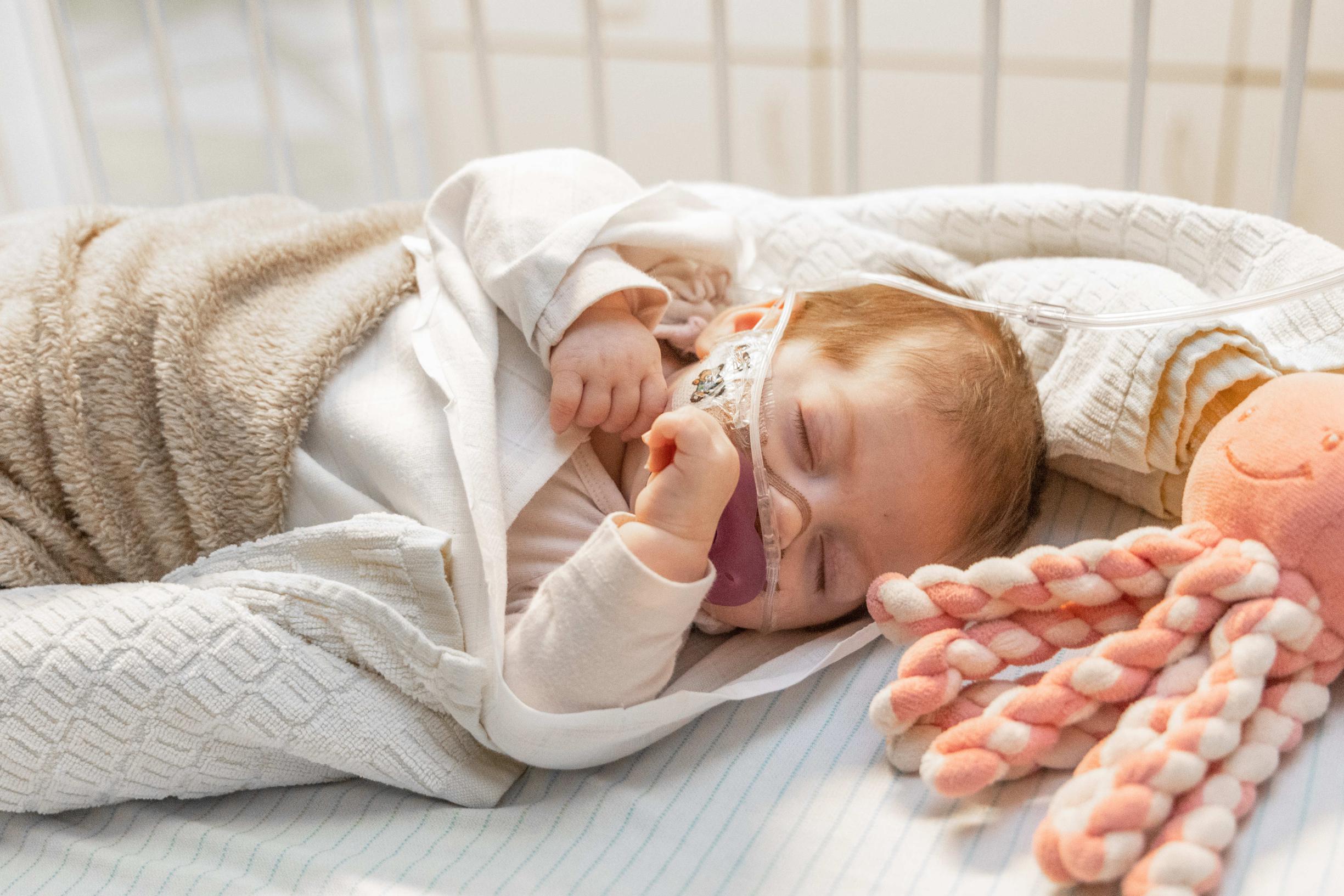Children’s wards in hospitals are bursting, virologists recommend keeping children away from events. But how can parents recognize an RSV infection? And can my child benefit from it?
1. How do I recognize an infection in my child?
An infection with RSV – which stands for: respiratory syncytial virus – always starts with cold symptoms: runny nose, cough, sneezing. This can affect both adults and children. But where the former usually stops at this, it can lead to a lower respiratory tract infection in children.
As the mucous membranes become inflamed, excess mucus is produced. “Pay attention to how your child breathes,” says pediatric pulmonologist Julie Willekens (UZ Gent). “Are you developing wheezing? Are you breathing faster than usual? Or does your child have to make more effort to breathe? Then you see the pull when you inhale, dimples appear in the ribs, or the abdomen or even the shoulders go with it.’
2. When should I take my child to the hospital?
Not with the first snot, Willekens says. “It can still be a common cold, and even if it’s RSV, it can be mild without going to the doctor.” This is different for very young babies under two months of age or for babies with pre-existing conditions, such as formerly premature babies, babies with weakened airways or reduced stamina. They are more susceptible to a serious course of the infection.’
As long as a child, despite a runny nose and cough, continues to play and eat normally, there is no cause for concern. ‘But definitely go to the hospital as soon as your son or daughter shows a general deterioration: if he is more tired, less alert, drinks less or urinates less. These are warning signs. Very young children, in particular, have less reserve, and therefore a greater risk of dehydration.’
• Steven Van Gucht requests that meetings with children be postponed due to the circulation of RSV
3. How sick can my child get from an RSV infection?
The vast majority of children survive an RSV infection unscathed. “But every year there are also children who become seriously ill,” Willekens says. She estimates that one to two percent of infected children end up in the hospital, an even smaller percentage in intensive care.
The younger the child, the better the chances. ‘To become seriously ill’ in this case means to develop pneumonia. “It happens very rarely that children die of RSV in our country,” says Willekens. “But it’s very rare and almost always associated with underlying conditions.”
4. How is an RSV infection treated?
Because it’s a virus, no drug is possible. “Kids have to fight the virus on their own,” Willekens says. What doctors do is provide support: give antipyretics, rinse the nose, use an aerosol, give food in smaller quantities, … In case of severe symptoms, it may be necessary to administer oxygen or tube feed.
The search for curative drugs is ongoing, Willekens says. Vaccines are under development. We hope to be able to start using it within a few years.’
5. Can my child survive an RSV infection?
In the short term, pediatricians see an increased susceptibility to respiratory tract infections. “Children may also receive more complaints when infected with other viruses. They need puffers more often.’ But about a year after the infection, that link disappears and the children are completely recovered.
‘Long-term, we see only a limited link between children who had RSV and asthma. But the question is which is the chicken and which is the egg. Is asthma a result of RSV infection? Or were the children more susceptible to RSV because they were predisposed to asthma from birth?’
6. My child has had an RSV infection. Is he immune now?
Not really. A child develops resistance to RSV, but this offers insufficient protection against reinfection. Plus: “There are different types of RSV, and a child remains just as vulnerable to it,” says Willekens. “A child can therefore experience an RSV infection several times in one winter.”
• Hospitals under pressure due to high number of RSV patients
7. How can I prevent RSV infection?
RSV is very contagious, Willekens says. It spreads through droplets, then through coughing or sneezing. “It’s the same story as the coronavirus. And therefore the same precautionary principles apply: wash and disinfect your hands well, ventilate and above all: avoid contact with sick people. The same goes for the opposite: if you have a cold as an adult, don’t go to find people with very young children. Also make sure there is no smoke in the vicinity of the child.’


